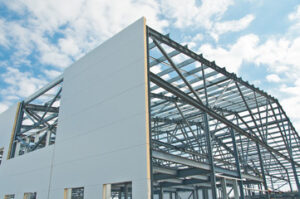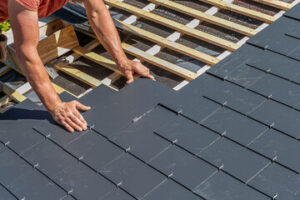If you’re interested in a massage, ask for a personal recommendation or look through an online directory to find a licensed and certified therapist. Before your appointment, shower to boost blood flow and energize your muscles.

During Swedish Massage Independence MO your therapist will use long, gliding strokes (effleurage) to relax muscles and promote circulation. They may also use kneading, friction and tapping techniques.
Every second of every day your circulatory system works hard to deliver oxygen and nutrients to all parts of your body. If the body is healthy, these processes run smoothly and efficiently. Massage can boost circulation by relaxing tense muscles, increasing oxygen flow, and improving lymph flow to remove toxins.
The pressure exerted during massage, especially in the form of vigorous kneading and pulling, stimulates blood vessels to widen and expand. This allows more blood to flow through the narrowed blood vessels, and also helps re-establish proper function in the damaged and swollen areas of your body.
Massage also has a number of other effects on the body’s soft tissues that improve circulation. The chemical changes that occur during massage, particularly the release of hormones, also aid in the process. There’s a lot that controls circulation, though, and it takes more than just a brief grip on some soft tissue to significantly affect the whole system.
A study reported in the Journal of the American Medical Association found that regular massages increase the diameter of blood vessels, which in turn increases the speed at which the heart pumps. While this can be a good thing, it doesn’t mean that the actual rate of circulation is improved. In fact, in some cases it might be worse.
The most significant way that massage does improve circulation is by stimulating the squeezing and stretching of lymph fluid. This drains metabolic waste away from muscles and internal organs, and helps prevent the build-up of lactic acid that causes stiffness and soreness. The stroking and skin stretching involved in certain types of massage, such as manual lymphatic drainage (MLD), is designed to encourage this.
If other forms of massage actually increased circulation in the same way, this would be a great thing, and it is likely that many of them do have some small effect on circulation. However, there are much better ways to boost circulation than massage, such as a balanced diet and regular exercise. Even so, it’s a great tool to use in conjunction with other pro-active steps, like wearing compression socks.
Relieved Pain
The pressure applied during massage stimulates blood flow to the affected muscles. This increased blood circulation carries oxygen and nutrients to the tissues, helping them heal faster. It also carries away waste products, such as lactic acid, from the muscles. The friction created by massage also increases muscle temperature, which helps the muscles relax and reduces pain.
In addition to delivering oxygen and nutrients, the pressure from massage helps to inhibit the body’s production of inflammatory chemicals, such as prostaglandins. These inflammatory agents are responsible for many of the side effects associated with chronic pain. Massage can also help to decrease the occurrence of migraine headaches by reducing tension in the head and neck muscles.
Research has found that massage improves the immune system by stimulating lymph fluid circulation, which carries away the waste products of protein metabolism. It can also increase the number of white blood cells that target pathogens, which helps to fight infection.
Studies have found that massage lowers the stress hormone cortisol and increases the mood-enhancing neurotransmitters serotonin and dopamine. These changes can lead to reduced feelings of anxiety and depression as well as improved relaxation, happiness and motivation.
The different physiological mechanisms that are used in massage to provide benefits include increasing skin and intramuscular heat, stimulating blood flow to the affected areas, causing an increased in range of motion in affected muscles and encouraging the release of positive hormones. Another important factor is the stimulation of the large nerve fibers which carry sensory input, such as pain, to the brain. This is called the gate control theory of pain relief and has been shown to be effective in reducing the symptoms of musculoskeletal pain.
The best time to get a massage is on an empty stomach, since this will allow for the smooth movement of your digestive tract. However, it is important to drink plenty of water after a massage, as this will rehydrate your body. Taking a shower before your treatment can also energize the muscles and encourage blood flow. This in turn will enhance the effectiveness of the treatment and improve your overall experience.
Relaxed Mind
The physiological effects of massage cause the brain to release hormones that promote relaxation and a sense of well-being. Stress hormones such as cortisol and adrenaline are decreased, while feel good hormones such as endorphins and serotonin are increased. These hormones signal the parasympathetic nervous system to kick in and calm the body and mind after a time of high emotions such as fear, anxiety or stress.
The calming effect of massage also helps you to focus your thoughts and can even give you the energy needed to finish tasks and be productive. Many people who struggle with chronic stress find that once their feelings of anxiety and tension are reduced they are better able to focus their thoughts and get back on track.
Massage increases the temperature of soft tissues and encourages a more relaxed state by causing vasodilation (widening of blood vessels) which improves circulation and eases muscle tightness and pain. It also helps to increase lubrication between the joints which reduces friction and discomfort. The physical and emotional benefits of massage result in a healthier immune system which is able to fight off disease, infections, and other illness.
Studies show that massage can boost the production of “feel good” neurotransmitters such as dopamine and serotonin which help alleviate depression, irritability, low self-esteem and anxiety. Many antidepressants work by boosting these same hormones in the body, but massage is an all-natural way to naturally lift your mood and improve your mental health. Think of it as an hourlong hug that helps to relax your muscles and your mind. With so many benefits, it is no wonder why massage has been called a “fountain of youth” in some cultures! For best results, it is recommended that you try to incorporate regular massages into your wellness routine. Schedule an appointment with our team of skilled massage therapists at Spa Theory today. We look forward to helping you achieve optimal health and wellness!
Improved Sleep
Sleep deprivation is a common problem, and people who suffer from insomnia or other sleep disorders can find relief with regular massages. A full body massage can relax the mind and alleviate stress-related physical tension that causes sleep issues, giving you a good night’s rest. Whether you choose a Swedish, deep tissue or sports massage, all types of massages can help with sleep. If you have specific areas of pain or tension, try a trigger point massage that targets pressure points in the body known to relieve stress. Or, try acupressure or Shiatsu massage, which utilizes techniques similar to acupuncture but without the needles.
Studies show that massage reduces cortisol levels and increases serotonin and dopamine, which are neurotransmitters that induce relaxation and a feeling of well-being. In turn, this helps promote a healthy circadian rhythm and regulates the sleep-wake cycle. In fact, it has been shown that massage reduces the time needed to fall asleep and can improve sleep quality.
When a person is stressed, their body produces the hormone cortisol, which can increase blood sugar levels, cause depression or anxiety, and lead to a variety of health problems including high blood pressure, abdominal fat, fatigue and sleeplessness. During a massage, cortisol is lowered and serotonin and dopamine are increased, leading to a more relaxed state and better sleep.
In addition to its other benefits, a massage can also stimulate the vagus nerve, which leads to the parasympathetic nervous system and a more relaxed mood. This may lead to decreased anxiety and a more consistent sleeping schedule as the brain is trained to calm down in response to the relaxing environment created by the touch of the massage therapist’s hands.
Regular massages can also help a person get back on track with their sleep routine after experiencing a disrupted night due to illness, injury or menopause. It is recommended that you get a regular, full-body massage or one targeted at specific areas of pain or tension once a week to achieve the best results. For those going through perimenopause or menopause, this is especially important as fluctuating estrogen levels can affect sleep patterns.





